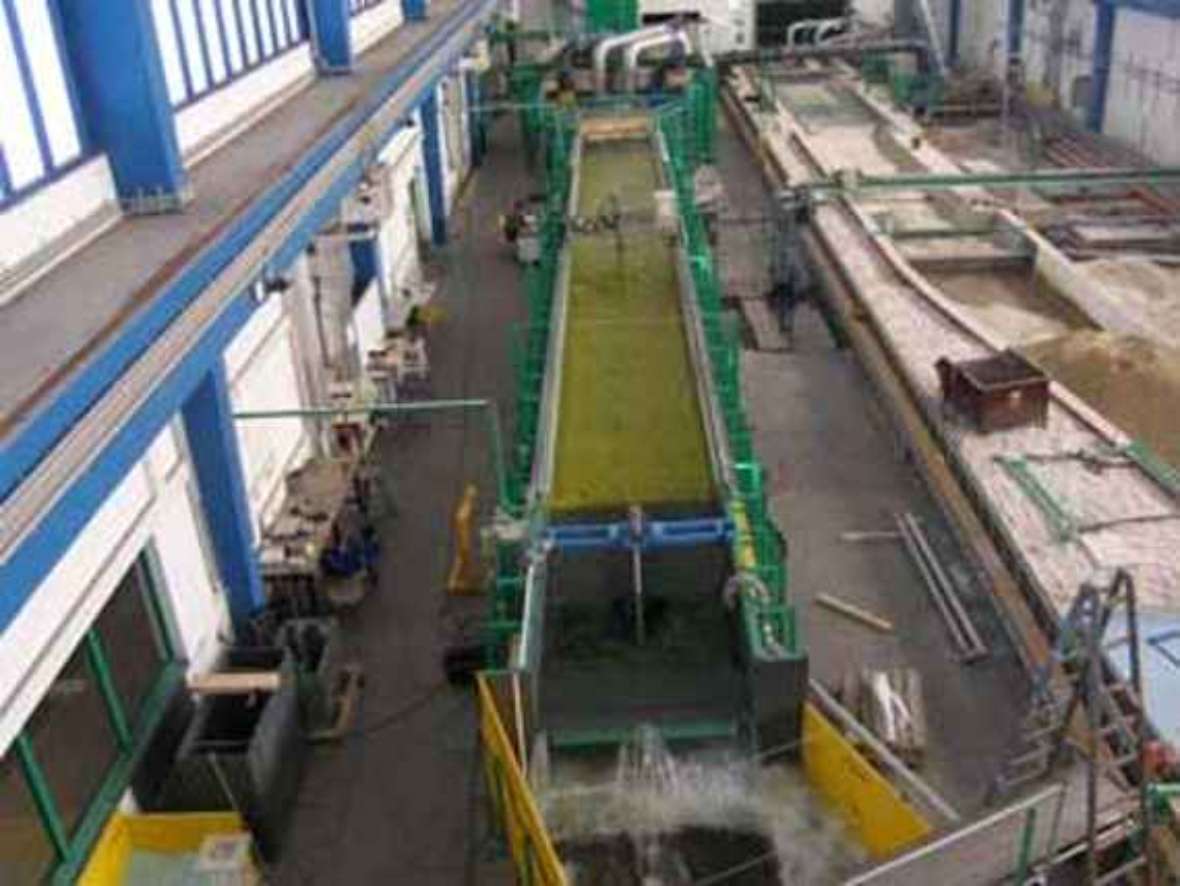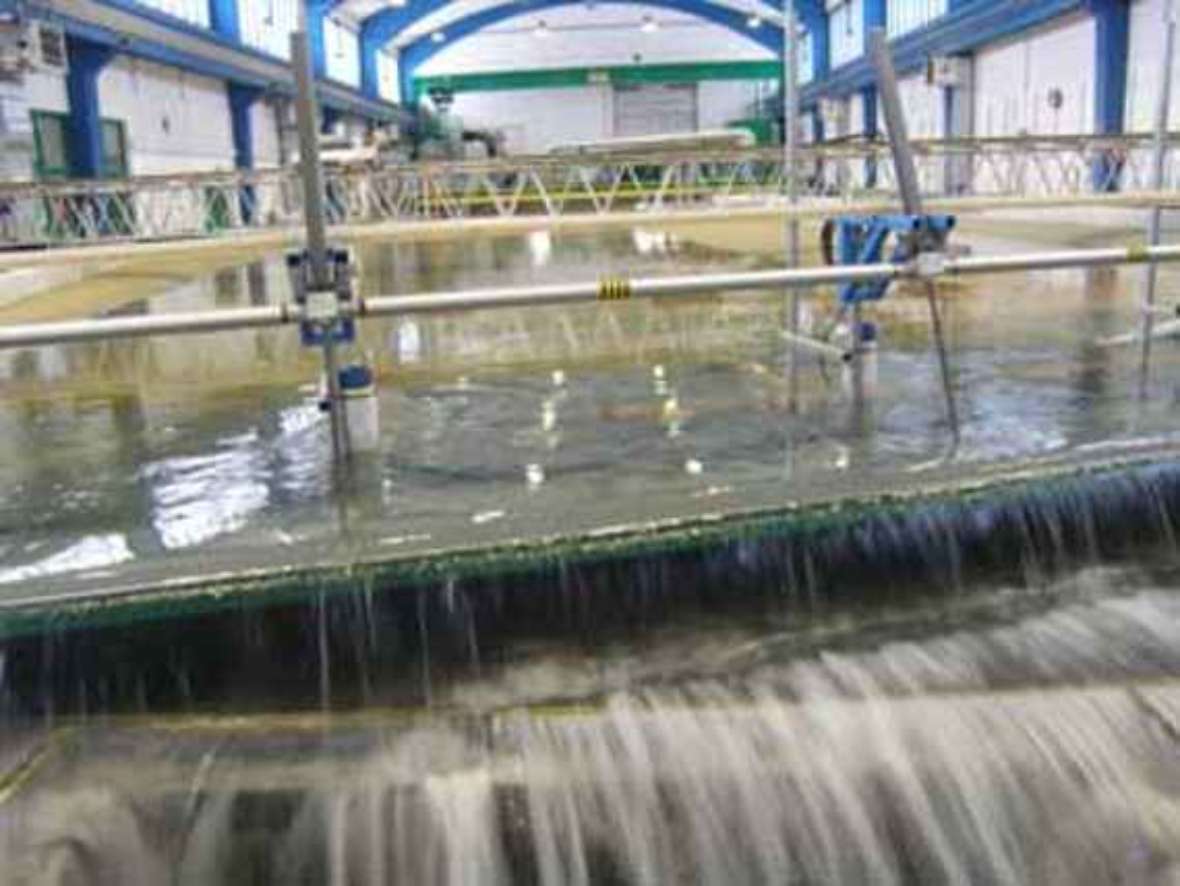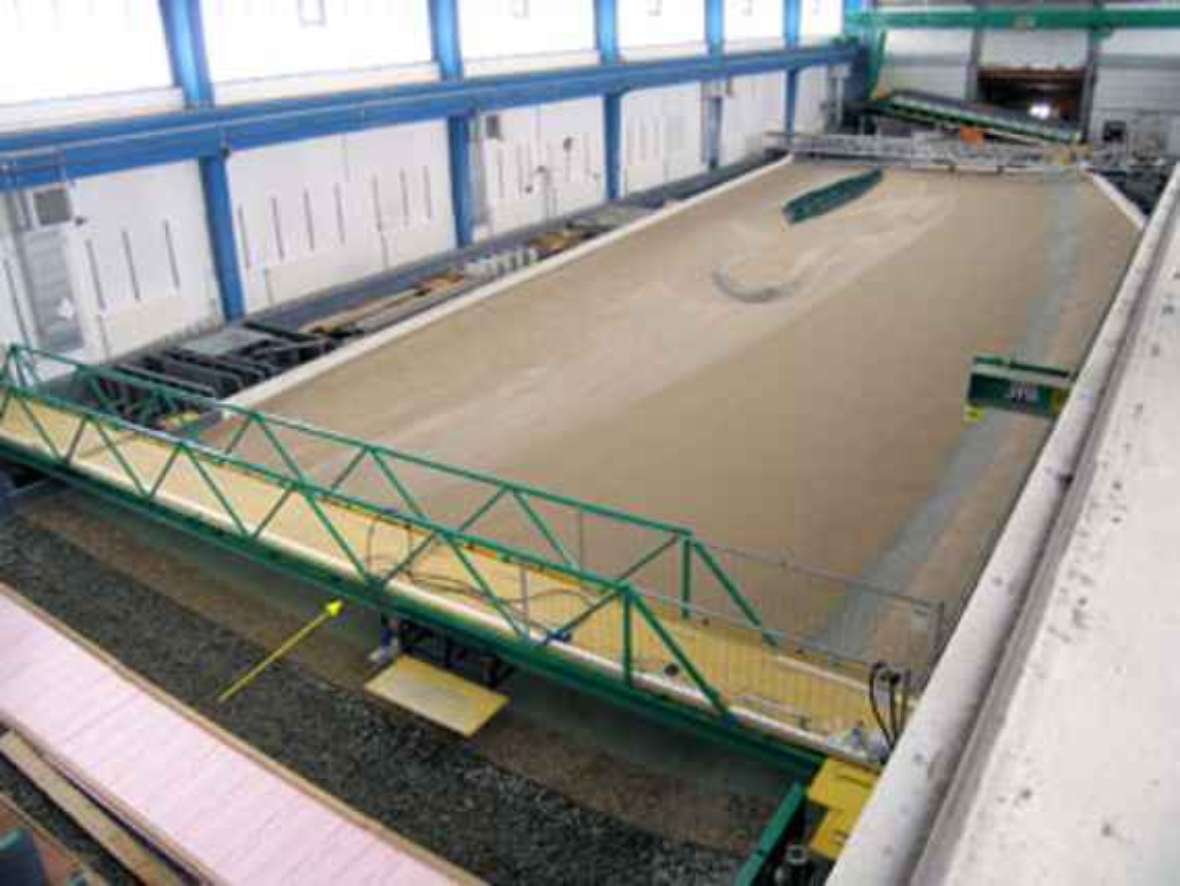The overall river engineering project Danube east of Vienna aims at a sustainable improvement of the conditions for navigation and the ecological conditions in the Danube Floodplains National Park. Due to the steady deepening of the Danube (river bed erosion) and the resulting falling water levels, the ecological situation in the river and the delimiting national park is getting worse and worse.
Customer: via Donau
One goal of the overall river engineering project is therefore the sustainable stabilization of the Danube downstream from Vienna by means of so-called granulometric river bed improvement. The addition of coarser stones is intended to reduce the bed load transport capacity of the Danube and thus stop the erosion of the bed. The granulometric bed improvement consists of a layer of gravel with a grain size of 40 to 70 mm, which is also contained in the natural Danube bed load, and which is about 25 cm thick. During floods, this gravel should mix with the Danube bed load, thus reducing the bed load transport capacity by about 90 %. As there was no practical experience with this method, two model tests were carried out.
In a model test on a scale of 1 to 10 (sectional model) the basic function of the method was tested. This also examined the effects of possible inaccuracies in the production process. The sectional model was a 2 m wide and 20 m long channel with a flow capacity of 2,500 litres per second.
Following the channel model, tests were carried out in a full model (scale 1 to 33.33) under three-dimensional turbulent flow conditions. The full model had a size of 52 by 16 m. Several tests were carried out, starting from the actual state up to the assumption of a complete mixing of the coarse grain layer with the Danube gravel. The tests showed that cross currents and local increased turbulence caused by installations such as flow guides or groynes have a large effect on the transport of the granulometric bed improvement. Overall, it has been shown that the planned method is suitable for dynamic river bed stabilization of the Danube.
The client for the investigations was via Donau - Österreichische Wasserstraßen-Gesellschaft mbH. The contract itself was carried out in cooperation with the Hydraulic Engineering Laboratory of the Vienna University of Technology (Institute of Hydraulic Engineering and Hydrology), which was also responsible for project management. We contributed our many years of experience in river morphology and model testing techniques to the project. More information about the overall river engineering project Danube east of Vienna can be found on viadonau
The results of the pilot project were published in the journal ÖIAZ, 154th issue 1-3/2009 and 4-6/2009.
-

© TU Vienna zoom gallery -

© TU Vienna zoom gallery -

© TU Vienna zoom gallery

